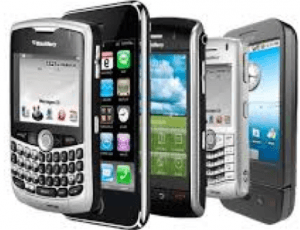Smartphone screens carry more bacteria – Research
 Insurance2Go, a gadget insurance provider based in Portsmouth, has undertaken a research, which shows that the average smartphone screen carries three times more bacteria than are visible to the eyes.
Insurance2Go, a gadget insurance provider based in Portsmouth, has undertaken a research, which shows that the average smartphone screen carries three times more bacteria than are visible to the eyes.
More than a third of the respondents (35 per cent) have never cleaned their phone with wipes, a cleaning fluid or a similar product, the research found.
The firm swabbed three popular handsets – an iPhone 6, a Samsung Galaxy 8, and a Google Pixel, to test for aerobic bacteria, yeast and mould.
The results revealed that all key areas of the phones harboured at least some quantity of each type of substance.
Researchers put the germs in growing conditions so they would become visible.
Insurance2go measured the dirtiest parts of the phones by counting the amount of colony-forming units per cm2.
The units are used to measure the number of viable bacteria or fungal cells in a sample.
The screens of the three handsets had a combined total of 254.9 colony-forming units per cm2, making them by far the dirtiest parts of the phones.
This means there was an average of 84.9 units of bacteria on each screen.
The test found the back of the phones had an average of 30 units, the lock button had an average of 23.8 units, and the home button had an average of 10.6 units.
The Google Pixel had 14.5 colony-forming units on its screen, another 14.5 on its lock, while 24 were found on the home button and 24 on the back.
The iPhone 6 had 40.4 units on its screen, 42.5 on the lock, another 42.5 on the back, and 2.9 on the home button.
The researchers found that the Samsung Galaxy 8 had the dirtiest screen with 200 colony-forming units, while 14.5 were on the lock, five were on the home button and 24 were on the back.
The results, however, do not suggest that one type of phone is more likely to get dirty than another.
The researchers also tested a toilet seat and an office keyboard and mouse and found, in contrast, that a toilet and flush had 24 units, while an office keyboard and mouse had just five.
Dr Shirin Lakhani of Elite Aesthetics, a skin clinic, said: “Our smartphones are a really big source of skin contamination and skin problems; namely acne.
“Skin friction, heat and pressure to the skin all contribute to skin problems caused by smartphones.”
Gary Beeston, Sales and Marketing Manager at Insurance2go, said: “Our phones are never far from our sides; we take them everywhere with us.
“Therefore, it’s inevitable that they’ll pick up a few germs along the way.
“In our experiment we took the germs that are normally lurking on our phones invisibly, and placed them in an ideal growing condition to help people see the potential hidden germs.
“Perhaps we don’t realise quite how infectious our phones can be considering we’re holding them against our faces.”
Source: GNA
